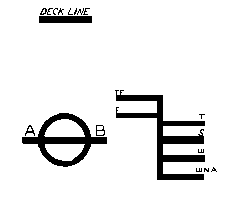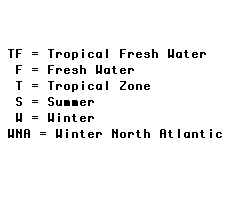|
SAMUEL PLIMSOLL and the LOAD LINE |


![]()
As the Napoleanic wars drew to a close and the Industrial Revolution swept Britain, the British Isles became increasingly dependant on merchant shipping for imports of the raw materials needed to support her thriving industy. Manufactured goods replaced ballast stones on ships departing for the far-flung outposts of the British Empire.
The era of the Merchant Navy began with adventure and romance, hazard and daring. The adventures that contributed so much to literature also led to very real efforts to improve the safety and survival of the crews and ships in merchant service.
![]()
There were few guarantees in the early days of the merchant marine. The great rewards enjoyed on the safe arrival of a sailing vessel loaded with Asian cargo were matched only by the risks of the voyage.
Crowds of well-wishers, owners, family and investors, cheered the departure of ships loaded with valuable cargoes. After the mast-tops faded below the horizon little or nothing would be heard of these ships for months. There were no undersea telegraph cables, no shipboard radios to signal the fate of a ship and her crew. The last word on many fine ships and men was a posting at Lloyd's - missing, presumed lost - their fates unknown.
The danger, the uncertainty, and the risks held out promise of rewards that attracted both sailors and investors. Sailors risked their lives in pursuit of excitement and adventure and investors offered their fortunes to back voyages which held perils nearly equal to returns. In spite of the hazards,there was never any shortage of volunteers for the Merchant Navy. Unlike the Royal Navy of that period, discipline was dictated by the sea, the winds, and the uncharted shores. What crews lacked in amenities (and there were few) was made up by personal rewards that few of us today have the fortune to experience. The legacy of this generation of mariners is a wealth of literature, and the foundation of our "romance" of the sea.
Adventure has its limits, however, and by 1836 public concern about the loss of ships and crews reached the point where Parliament was forced to appoint a committee to investigate the growing number of shipwrecks. In 1850, legislation was passed to create the Marine Department of the Board of Trade, to enforce application of laws governing manning, crew competence, and operation of merchant vessels. The first battle of the load lines had begun.
Despite calls for regulation, the British government avoided direct interference with ship operators until, in 1870 Samuel Plimsoll, a member of Parliament from the industrial Midlands, demanded creation of a safety limit, a "load line" to limit the weight of cargo loaded aboard ships.
Plimsoll exposed what he described as "coffin ships" created by overloading, and drafted a bill to improve conditions aboard merchant vessels. The government formed a "Royal Commission" to investigate merchant marine practices and conditions and exposed many "malpractices" committed by "bad owners." A reform bill was introduced in 1875 but was defeated. Public awareness of shoddy practices and abuse had become widespread however, and in 1876 the first load line regulations were made into law. Since then every merchant ship afloat carries the "signature" of Samuel Plimsoll, a politician from Derby, part of England closer to horse racing and Robin Hood than the sea.
![]()
The Plimsoll Load Line and American Shipping
The postion of the load line was not fixed by regulation in the early years and there was considerable variation in how the line was marked on a ship's side. American vessels were loaded to a formula based on "inches per foot of depth of hold" (the method used in Britain prior to 1890) until 1917 when the U.S. Shipping Board required adherence to British Board of Trade standards based on a set of calculated freeboard tables.
Load line legislation was introduced in congress in 1920 and failed. Not until 1929 was the Load Line Act passed in the United States, more than a century after ship losses due to overloading became a recognized problem in the industry.
![]()
Placement of the "Plimsoll Line" is determined by a calculation of the freeboard considered necessary to ensure adequate "reserve bouyancy" for the type of ship, cargo, season,and geographic area of operation.
A complete discussion of the factors involved in calculating freeboard is beyond the scope of this web-page, but some of the items considered by classfication societys include:
Structural Strength - The deeper the draft of a ship (the amount of the ship that is underwater), the greater are the loads imposed on the ship's structure.
Compartmentalization - In the event of an accident (or casualty in marine terms), the amount of reserve bouyancy available will depend on how the hull is divided into separate watertight compartments. Compartmentalization is especially critical in the design and construction of passenger ships and special subdvision load lines are assigned for these vessels.
Deck Height - Platform height (the height of the weather deck above the waterline) is a measure of how the vessel may be affected by seas which sweep across the deck.
Transverse Stability - While freeboard does not directly determine the side-to-side stability of a ship, higher freeboard will allow a ship to roll further before submerging the deck.
Hull Form - Sheer describes the curve between bow and stern. A ship with high freeboard at the bows and stern compared to midships (where freeboard is measured) has more reserve bouancy.
Fullness - The underwater shape of a hull. A rectangular cross-section as on a tanker, is described as "full" and has less reserve bouyancy with the same freeboard than a more rounded hull like that of tugboat or liner.
Length - A long ship only a few feet of freeboard has less reserve bouyancy that a shorter ship with the same freeboard.
Type of Vessel and Cargo - Tankers and Lumber ships with bouyant cargoes require less freeboard than a passenger liner or containership.
Season and Zone - Weather conditions normally encountered along a ship's trade route effects its seaworthiness. Ships sailing the North Atlantic in Winter are exposed to much more severe conditions than one sailing around the South Seas.
![]()
For a more complete explanation of ship stability and loadlines refer to:
| Modern Ships by John H. La Dage, Lt. Comdr. USMS Cornell Maritime Press, Inc. Cambridge, Maryland ISBN 0-87033-065-9 Library of Congress Catalog Number: 65-21747 |